With How to start meditation at home at the forefront, this paragraph opens a window to an amazing start and intrigue, inviting readers to embark on a storytelling casual formal language style filled with unexpected twists and insights.
Meditation is a powerful tool for finding inner peace and improving mental well-being. From understanding the basics to creating your own calming space, this guide will take you through the steps of starting your meditation journey at home.
Understanding Meditation
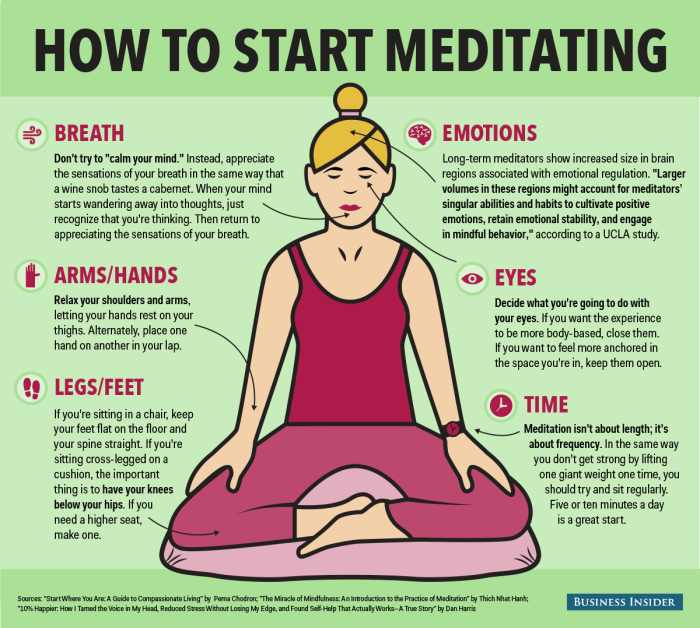
Source: lovethispic.com
Meditation is a practice that involves focusing your mind on a particular object, thought, or activity to achieve mental clarity and emotional stability. It is often used to reduce stress, anxiety, and improve overall well-being.
Benefits of Practicing Meditation
- Reduces stress and anxiety levels
- Improves concentration and focus
- Promotes emotional health and well-being
- Enhances self-awareness and mindfulness
Different Types of Meditation Techniques
- Mindfulness Meditation: Focuses on being present in the moment and observing thoughts and sensations without judgment.
- Transcendental Meditation: Involves silently repeating a mantra to transcend to a state of pure awareness.
- Loving-Kindness Meditation: Cultivates feelings of love and compassion towards oneself and others.
Examples of How Meditation Can Improve Mental Health
- Reduces symptoms of depression and anxiety disorders
- Enhances emotional regulation and resilience
- Improves sleep quality and overall mood
Setting Up Your Space
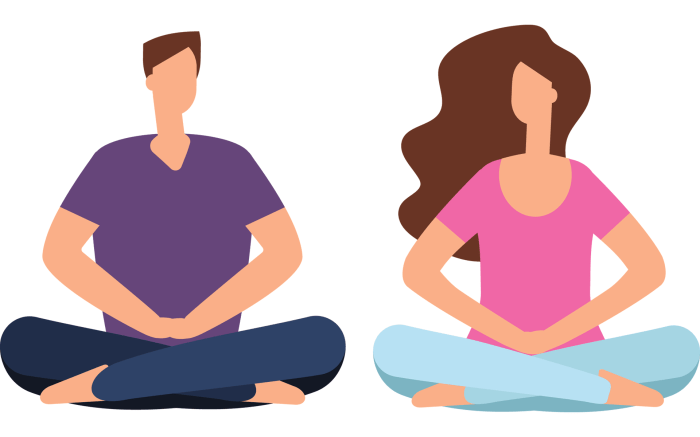
Source: mindful.org
When it comes to meditating at home, creating the right environment can make a big difference in your practice. Here are some tips to help you set up your space for meditation.
Ideal Space for Meditation
Find a quiet and clutter-free area in your home where you can sit comfortably without distractions. This could be a corner of a room, a spare bedroom, or even a cozy spot in your living room.
Creating a Calming Environment
- Use soft colors like blues, greens, or neutrals to promote a sense of calmness.
- Add elements of nature such as plants or a small indoor fountain to bring a soothing atmosphere.
- Consider using cushions or a meditation bench to create a comfortable seating arrangement.
Importance of Lighting and Temperature
- Opt for natural light during the day or soft, warm lighting in the evening to create a relaxing ambiance.
- Ensure the room is well-ventilated and at a comfortable temperature to help you focus and relax.
Using Scents for Meditation
- Lighting incense sticks or using essential oils like lavender, sandalwood, or frankincense can enhance your meditation experience.
- Choose scents that you find calming and uplifting to help create a peaceful atmosphere.
Establishing a Routine
Establishing a routine is crucial when it comes to meditation practice. Consistency in your practice helps you progress and experience the full benefits of meditation. Here are some tips on how to create a routine that works for you.
The Best Time of Day to Meditate
Choosing the best time of day to meditate is a personal preference. Some people find it beneficial to meditate early in the morning to start their day with clarity and focus. Others prefer meditating in the evening to unwind and relax after a long day. Experiment with different times to see what works best for you.
Integrating Meditation into Your Daily Schedule
Integrating meditation into your daily schedule can be as simple as setting aside 5-10 minutes each day. You can meditate before or after other daily activities, such as brushing your teeth or before going to bed. Find a time that works for you and make it a non-negotiable part of your routine.
Setting Realistic Meditation Goals
When setting meditation goals, it’s important to be realistic and start with achievable targets. Begin with shorter meditation sessions and gradually increase the duration as you become more comfortable. Setting realistic goals will help you stay motivated and committed to your practice.
Starting with Basic Techniques
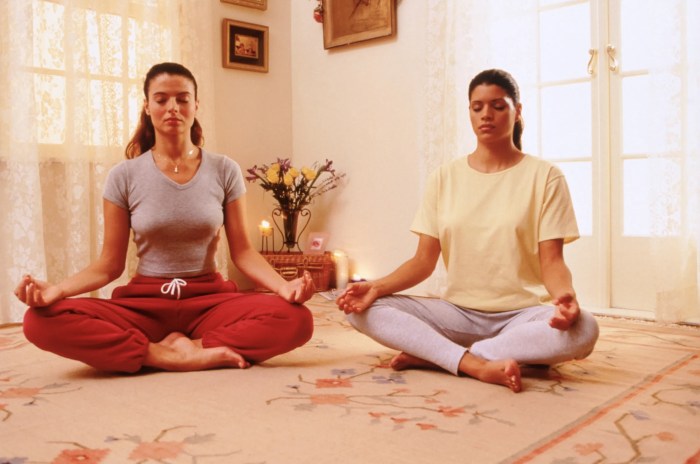
Source: wired.com
Breathing techniques are fundamental in meditation as they help calm the mind and body. Focusing on the breath can bring awareness to the present moment and promote relaxation. Here are some simple breathing techniques for beginners:
Simple Breathing Techniques:
- Breathe in slowly and deeply through your nose, feeling your lungs fill with air.
- Hold your breath for a few seconds, then exhale slowly and completely through your mouth.
- Repeat this process, focusing on the sensation of breathing and letting go of any distracting thoughts.
Tips for Focusing the Mind:
- Focus on the sensation of your breath entering and leaving your body.
- Count your breaths or silently repeat a calming word or phrase to maintain focus.
- If your mind wanders, gently bring your attention back to your breath without judgment.
Body Scan or Progressive Relaxation Techniques:
- Start by focusing on one area of your body, such as your toes, and gradually move your attention up through each body part.
- Notice any tension or discomfort and release it with each exhale, allowing your body to relax completely.
- Progressive relaxation can help you become more aware of your body and release physical tension during meditation.
Dealing with Distractions:
- Acknowledge distractions without getting frustrated, gently guiding your focus back to your breath or chosen point of focus.
- Use grounding techniques like focusing on the sounds around you or the sensation of your body on the floor to stay present.
- Practice self-compassion and patience as you navigate distractions, knowing that it is a natural part of the meditation process.
Resources and Support
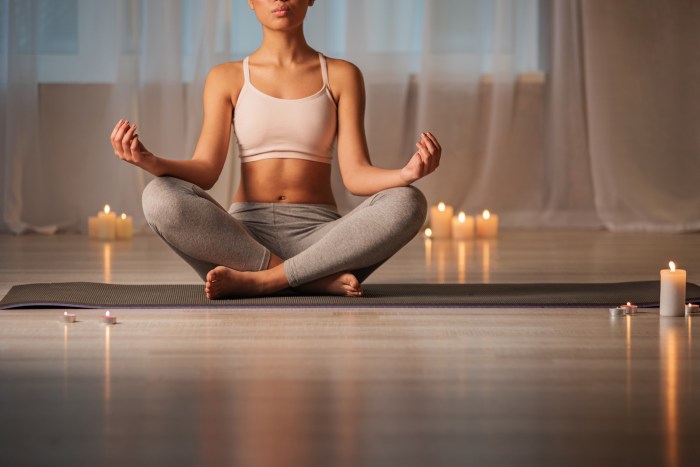
Source: bigstridz.com
When starting your meditation practice at home, it’s essential to have access to resources and support to help you along the way. Here are some options to consider:
1. Meditation Apps and Online Guides
There are numerous meditation apps available that offer guided meditation sessions, mindfulness exercises, and relaxation techniques. Some popular options include Headspace, Calm, and Insight Timer. These apps can provide structure and guidance for your practice, especially if you’re just starting out.
2. Books and Podcasts on Meditation
For those who prefer reading or listening, there are plenty of books and podcasts on meditation that can deepen your understanding and provide valuable insights. Some recommended books include “The Miracle of Mindfulness” by Thich Nhat Hanh and “Wherever You Go, There You Are” by Jon Kabat-Zinn.
3. Online Meditation Communities
Connecting with like-minded individuals can be a great source of support and motivation. Look for online meditation communities or forums where you can share experiences, ask questions, and learn from others. This sense of community can help you stay accountable and inspired on your meditation journey.
4. Meditation Classes or Workshops
Attending meditation classes or workshops, whether in person or online, can provide valuable guidance from experienced teachers. These classes often offer a structured approach to meditation practice, opportunities for Q&A, and a supportive environment to cultivate your practice. Consider exploring local studios or virtual platforms for classes that resonate with you.
Final Review
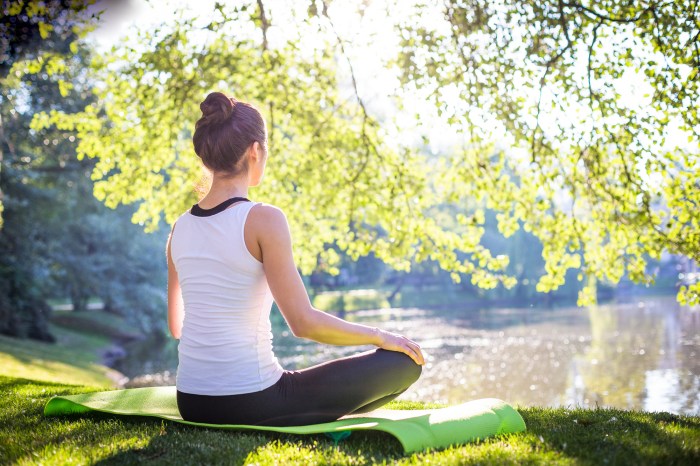
Source: thriveglobal.com
In conclusion, starting meditation at home is a rewarding and transformative experience. By following these steps and staying committed to your practice, you can cultivate a sense of calm and balance in your daily life. Begin your meditation journey today and unlock the many benefits it has to offer.